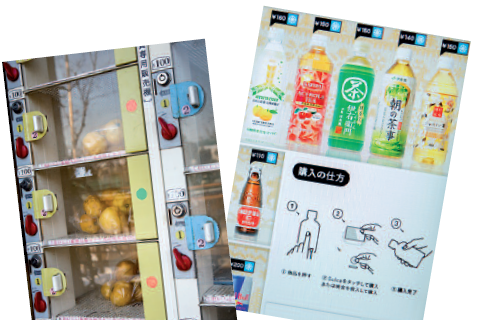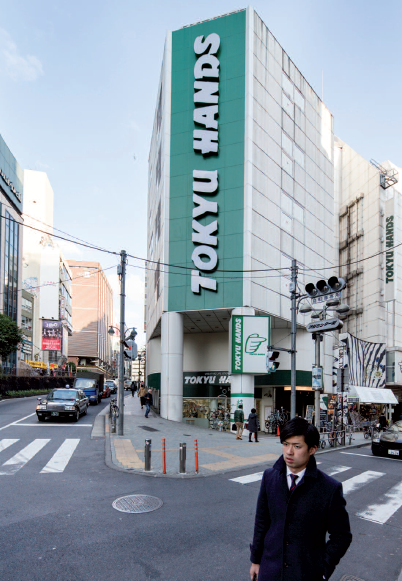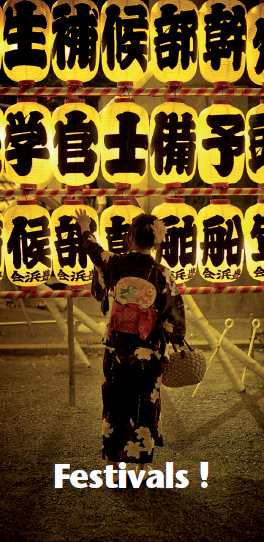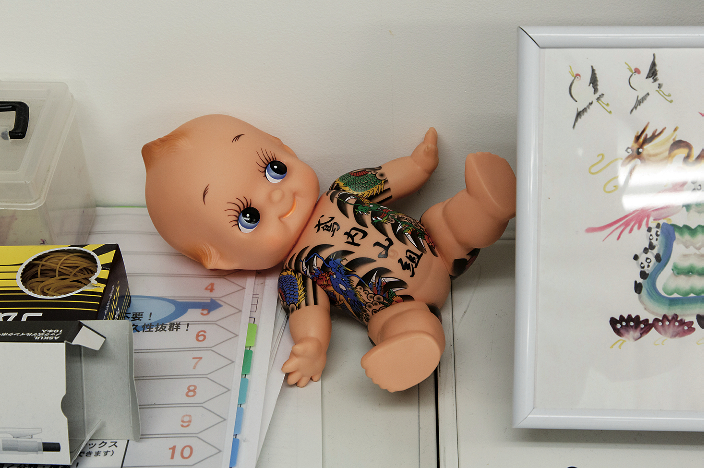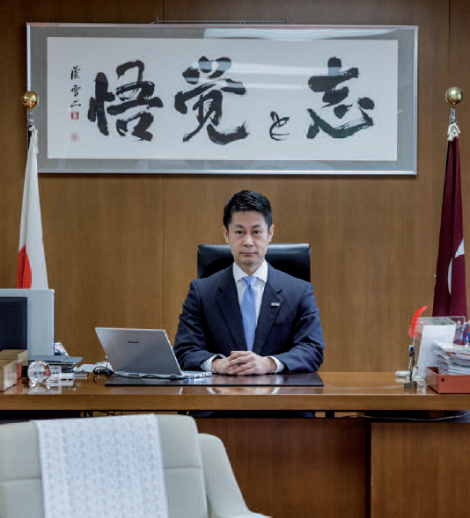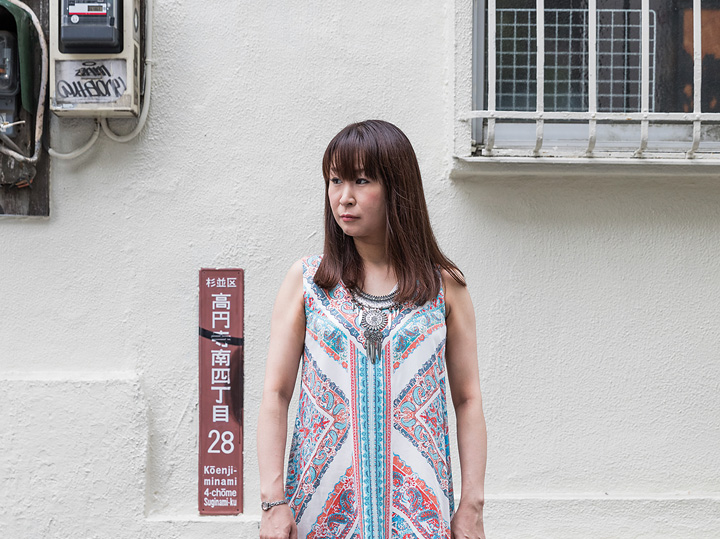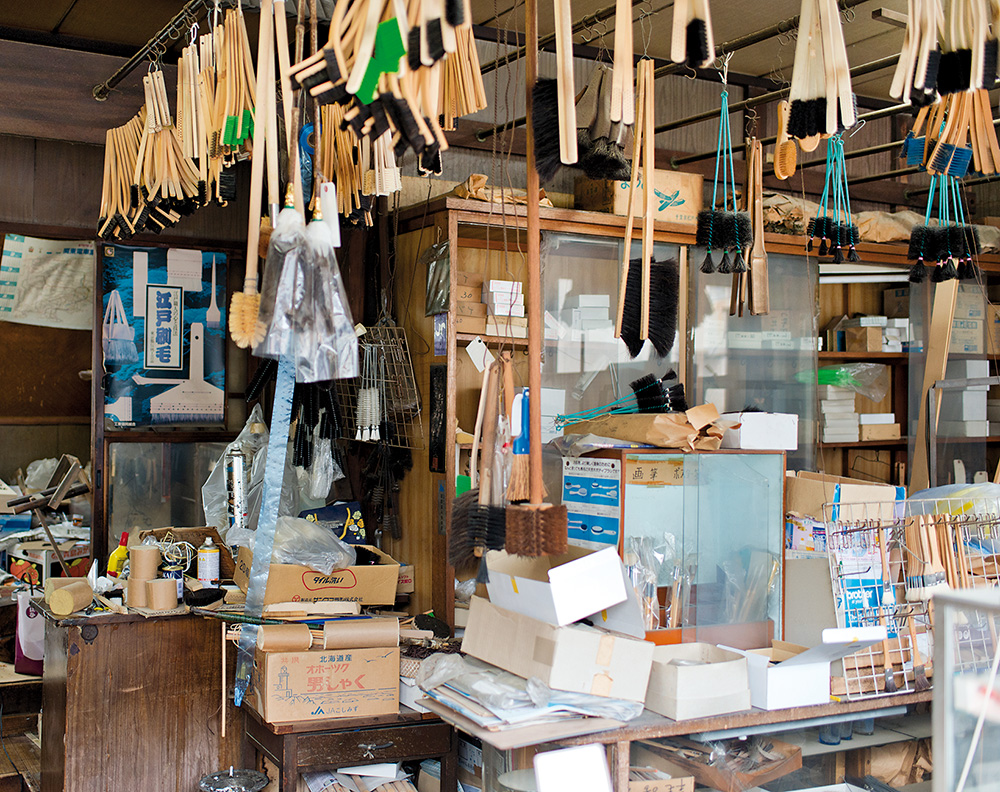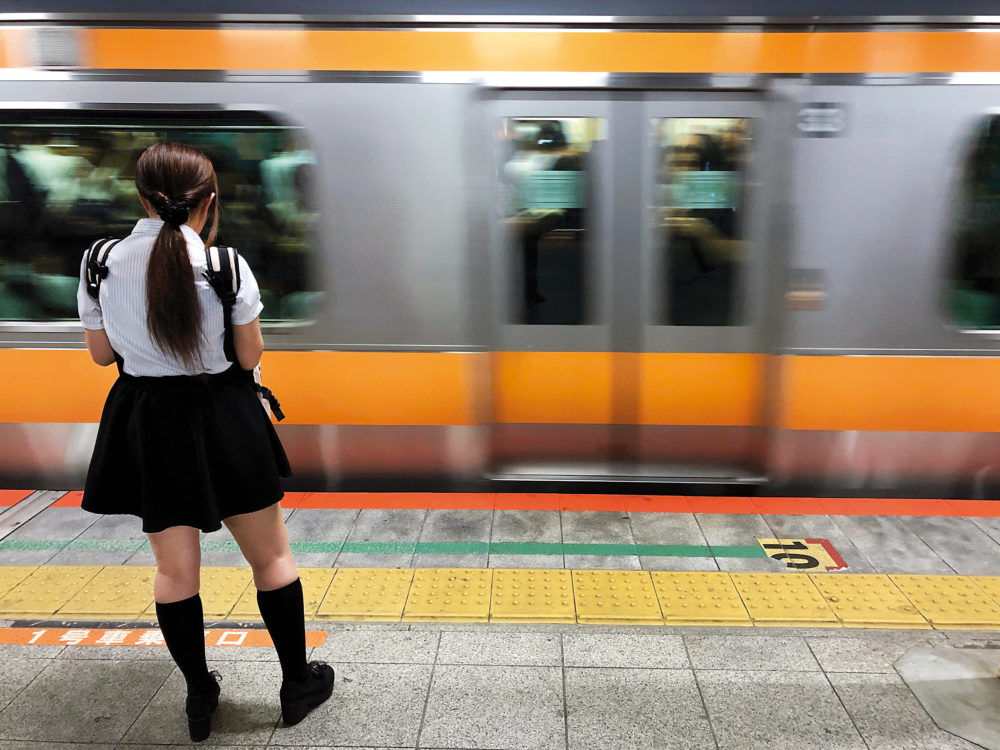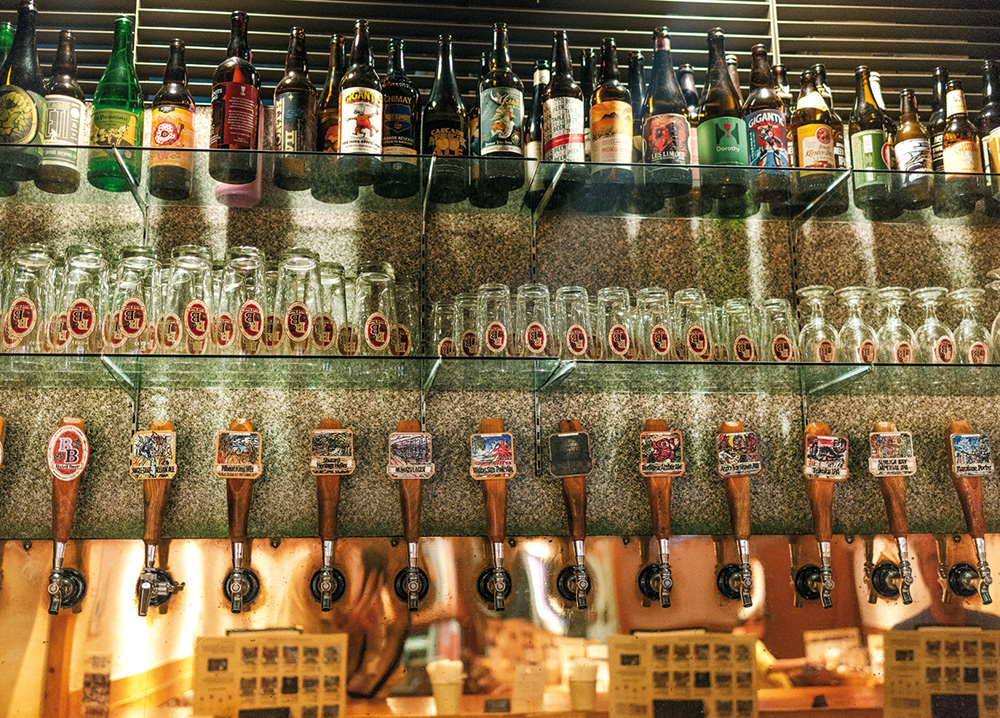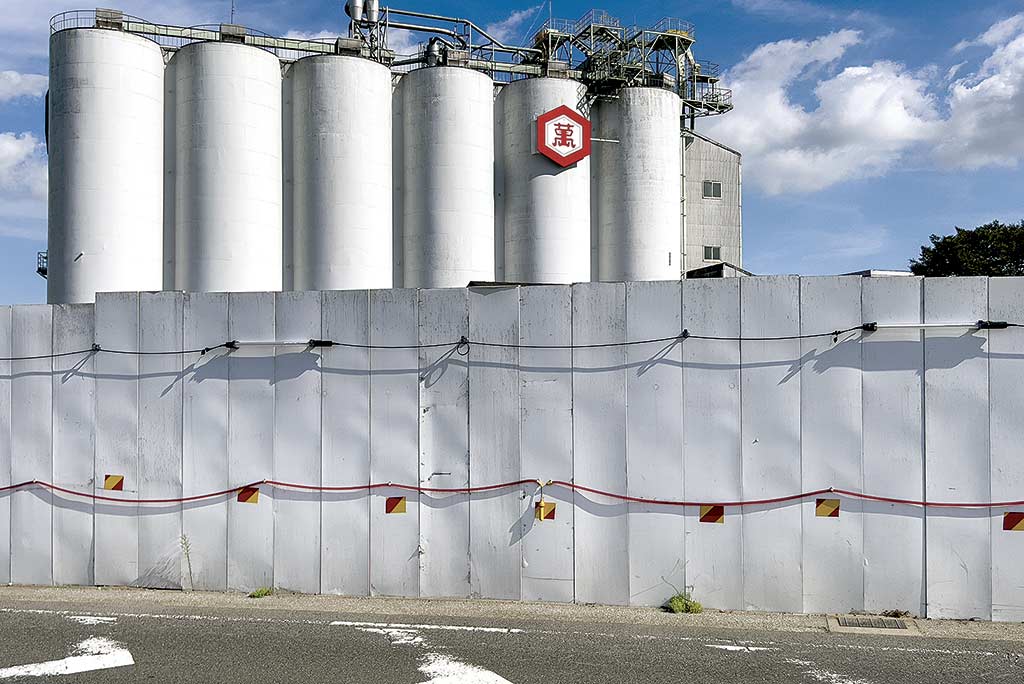

/ Eric Rechsteiner for Zoom Japan
Located to the east of Tokyo, the company has become a global giant in the space of a few decades.
Noda City, in the north-western corner of Chiba Prefecture, occupies a strip of land wedged between the prefectures of Saitama and Ibaraki. On its western border, just across the river, is Kasukabe, famous as the location of the comedy manga and anime Crayon Shin-chan. But while Kasukabe is, in everyone’s mind, synonymous with irrever- ent humour and scatological jokes, Noda is all about business as the city is the headquarters of Kikkoman, the most popular brand of soy sauce in Japan. Its annual sales reached 468.1 billion yen* last year.
In some respects, Kikkoman to Japan is what Coca-Cola is to America and for the rest of the world, it is a brand whose popularity has gone beyond the product it sells. Like Coca-Cola, Kikkoman even has its own originally designed bottle – a tabletop glass dispenser that until not so long ago could be found in every house and restaurant. But Noda’s long relationship with shoyu goes well beyond Kikkoman.
Throughout the 17th century, the city of Edo grew at a furious pace. Various industries flourished in the Kanto region, and people began to rely less on the goods that previously had to be transported all the way from the Kansai region in the south. Among the areas that began to fulfil Edo’s inexhaustible demand for food stuffs, the cities of Noda and Choshi in the Shimosa Province (currently Chiba Prefecture) developed as the centre of soy sauce production. Not only were the surroun ing plains and climate suitable for growing soybeans and wheat, but two major rivers, the Edo-gawa and Tone-gawa, connected them to both the shogunal capital and the sea.
This area became the birthplace of a new kind of soy sauce, dark in colour and rich in flavour, which better matched the tastes of the people of Edo. The large male population that moved to the city during the 17th century preferred salty and strong-flavoured soy sauce, and the breweries based in Noda and Choshi were happy to oblige. The new sauce, koikuchi, quickly became a local favourite. Sales rankings similar to the one created for sumo wrestlers periodically listed the most popular sauces in the Edo market, and Noda and Choshi producers were consistently at the top.
Noda’s shoyu production is said to have started between 1558 and 1570 by a man named Iida Ichirobei who sold the product to a local feudal lord. In 1661, Takanashi Hyozaemon, the head of Kamihanawa Village, followed Iida’s example, and one year later Mogi Saheiji started manufacturing miso (shoyu production was only added in 1764). The Takanashis and Nogis would later be chosen as the shogun’s trusted producers.
Throughout the 18th century, more entrepreneurs opened their breweries. In 1781, seven of those families created a partnership, and in 1887 they formed the Noda Shoyu Brewers Association. Finally, in 1917, eight families connected to the Mogis, Takanashis and Horikiris jointly established Noda Shoyu Co., Ltd. to increase their capital and modernise the soy sauce industry. This company was later renamed Kikkoman Co., Ltd.
A visit to Noda reveals a city whose life, today more than ever, revolves around soy sauce. Kikkoman’s presence is everywhere, of course, (flags and billboards advertising the company’s name are practically attached to every wall and lamppost), but Noda is also the headquarters of two other long-established companies that opted not to join the original partnership: Kinoene Shoyu Co., Ltd. (founded in 1830) and Kubota Miso Shoyu Co., Ltd. (1925).
The city itself is a typically dull industrial suburb, and it takes some time to get used to the pervasiveandstickysmellofshoyu.Ontheother hand, though, the area west of Nodashi Station is full of historical architecture. Noda survived the Pacific War unscathed and today one can visit many buildings connected to the local industry, including the residences of the wealthy merchants who made their fortunes with soy sauce. Some have been designated National Places of Scenic Beauty and Tangible Cultural Properties, while in 2007 the Ministry of Economy, Trade and Industry designated the old breweries as part of Japan’s Modern Industrial Heritage.
Our exploration first leads us to the massive Kikkoman plant a few minutes’ walk from the station. Inside, beyond a vermillion-lacquered bridge, is the goyogura (Imperial Storehouse). The original building was erected in 1939 alongside the Edo-gawa river as a brewery dedicated to producing soy sauce for what at that time was called the Ministry of the Imperial Household. The building we can visit today is a faithful reproduction and, as well as exhibiting old tools and equipment, it is where traditional methods are still used to brew shoyu for the Imperial Household Agency using only domestically grown whole soybeans and wheat. Almost handmade, the Goyogura Soy Sauce is sold in limited quantities.
While at the Kikkoman plant, you can pay a visit to the Soy Sauce Museum where the manufacturing process is explained in detail. This popular spot is said to attract about 100,000 visitors every year. Heading west, we reach the Kofu Kaikan. It was built in 1929 by the Kofukai, an association founded by the Mogis and Takanashis to contribute to Noda’s social and cultural life. The building houses a concert hall and the association still runs educational, welfare, and library projects.
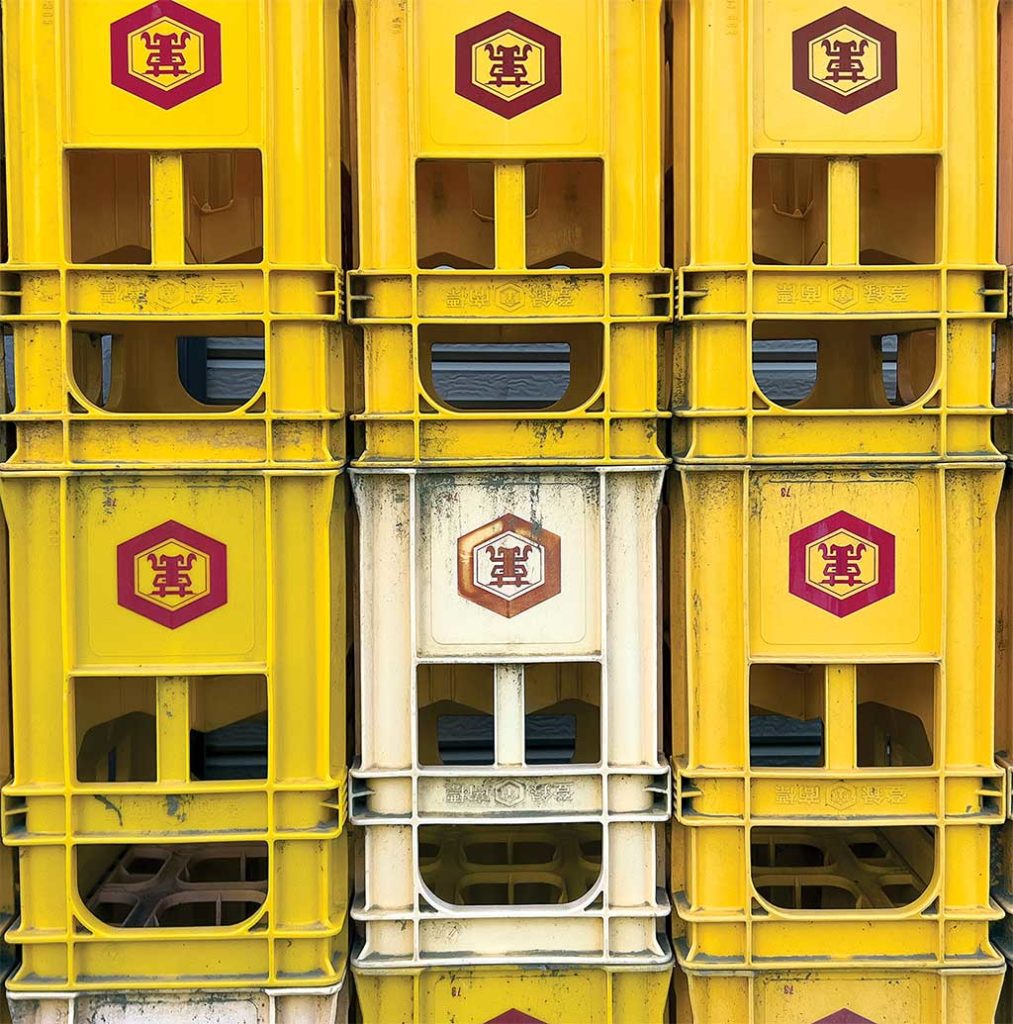
/ Eric Rechsteiner for Zoom Japan
Not far from the Kofu Kaikan is a slightly older building, the Former Noda Commercial Bank dating back to 1915. Since most of the members of the founding committee were soy sauce brewers, it is said that the bank was named after the word for soy sauce (the two kanji or characters, chosen for the word “commercial” are pronounced “shoyu”). Currently, the building belongs to another company and cannot be visited. At this point, if you have enough time, you should make a detour and head towards the Edo-gawa. Not far from the river, you will find the Kamihanawa Historical Museum and the Kikkoman Rengagura (Brick Storehouse). The latter’s imposing red brick construction can only be admired from the outside, but the museum, housed in the sprawling former residence of the Takanashi family, is a beautiful place to explore. Takanashi began to make shoyu in the 17th century and produced more than 200 brands throughout the Edo period. In 1840, it was listed as Ozeki (the second highest rank) in the Kanto Soy Sauce Ranking. In front of the residence, from 1900 to 1926, the Noda Jinsha Railway connected the Edo-gawa river with the Station, transporting soy sauce and raw materials using human power to push the freight. The line was closed when the company switched to lorry transport after the Great Kanto Earthquake.
Built on a 9,900 square metre site, the residence includes a garden, a grove, a shrine, and several buildings from the middle of the 18th century to the beginning of the 20th century. The museum was established in 1994 to preserve the local shoyu-related history and display important historical materials such as brewing and household tools as well as local and company-related documents.
Retracing our steps, we reach the Noda City Folk Museum, devoted to the archeology, history, and folklore of the area and – of course – its relationship with soy sauce production. Housed in the former residence of brewer Mogi Saheiji, it opened in 1959 as the first registered museum in Chiba Prefecture with construction funds donated by Noda Soy Sauce (currently Kikkoman). The materials on display include a large number of soy sauce-making tools and help explain the soy sauce brewing process in the Edo period. Our historical walk around Noda ends a few metres from the museum at the Noda Civic Hall which was built in 1924 and stands inside the same former Mogi residence.
Is that all? Not really. After all, Kikkoman is a pervasive presence all over the city. One of the principles informing the Mogi family’s business model since the early days has been to spend private money on public works, and the consortium they created with the Takanashis and the Horikiris, far from being limited to the brewing business, was involved in developing Noda’s early electricity and water infrastructure. Kikkoman, for example, was involved in the local water supply business until the 1970s when it was transferred to the city.
Today, a walk around Noda will reveal the Kikkoman Baseball Ground and even the Kikkoman General Hospital. In 1862, as part of their activities to contribute to the local community, one of Kikkoman’s founding families first established a medical facility for the brewers and their families.
After that, the Noda Shoyu Brewers Association built the Noda Hospital in 1914, to commemorate Emperor Taisho’s accession to the throne. Kikkoman’s Honorary Chairman Mogi Yuzaburo, who currently runs the hospital, told Nikkei Style magazine that his company has a responsibility to provide Noda with adequate medical facilities. “Our roots lie in the healthcare centre we created back in the 19th century,” he said, “and we still have a role to play in supporting the infrastructure of the region.”
The brand-new Kikkoman General Hospital opened in 2012, and is a state-of-the-art building featuring panels for solar power generation and a seismic isolation structure so that it can maintain its functions as a hospital even in the event of a disaster. Well water and energy-saving equipment are used, and various environmentally friendly devices are incorporated.
Following the same environmentally-friendly guidelines, the Kikkoman Head Office Building, which was completed in 1999, has been designed as a “sustainable office”, and incorporates a variety of cutting-edge innovations aimed at harmonising with nature and reducing environmental impact. With these measures, the building’s lighting power consumption per day in fine weather has been reduced by approximately 42%, and the annual heat load coefficient has also been reduced by approximately 29%.
Thebuilding’sadvancedtechnologyhasreceived high praise from experts. In 2003, it received the Excellence Prize at the 4th JIA Environmental Architecture Awards and, in 2011, the Special Award of the Society of Heating, Air-Conditioning and Sanitary Engineers of Japan.
G. S.

